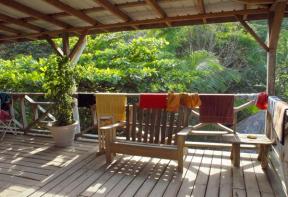Five strategies for DIY deck-building
As the snow melts, our thoughts turn to decks, docks and patios. In anticipation of the upcoming CHW Deck Issue (April), here are some tips and techniques from CHW technical editor Steve Maxwell.
Durable decks are more difficult to build than they look. That’s why it pays to take the time to incorporate top-notch construction details into your next deck project. They’re going to cost you a little more time and money up front, which is why few deck-builders bother. But the fact is you can easily add 10 to 20 years of life to your structure if you do things right, all while enjoying a deck that looks better and is easier to maintain. Diligence is always a good design.
1. End-Spaced Deck Boards
End-spacing is a key water-control detail. Wherever floorboards touch each other end to end, you’re sure to foster premature rot. What else would you expect when thirsty end-grain surfaces come together and hold water between them long after rains stop? The solution is to install deck boards so they meet only over double joists spaced about 1/2″ apart. This detail allows the ends of neighbouring deck boards to be spaced apart between 1/8″ to 3/16″, with a free drainage zone underneath. By allowing vulnerable areas of the wood to dry quickly like this, rot doesn’t have the same easy start.
There are two hassles to this system. Besides having to install two joists every so often instead of one, you’re restricted in where you can locate deck-board joints. The best way around this problem is to predetermine deck- board lengths that allow joints to occur in sync with your double-joist locations.
2. Concrete Pier Foundations
Since decks seem so simple, it’s easy to underestimate the need for a solid foundation. Easy at first, anyway. But it only takes a bit of frost heave or settling to make even the fanciest decks tilt and sag. That’s why it’s wise to look beyond standard deck-block foundations. Sure, they’re cheap and easy, and they might do OK on solid, well-drained soils. But how do you know until you’ve invested all that time and money into your new deck? Why risk thousands of dollars to save hundreds?
he best deck foundations are poured into heavy cardboard pier tubes that extend down below the frost line. U-shaped, galvanized-metal fittings called “post saddles” anchor the wooden deck posts to the concrete piers in the tubes. The piers themselves should also include a piece of 1/2″ rebar in the centre, extending up to within 4″ of the top. Distance between piers depends entirely on your deck design, as does pier diameter. Although 6″-diameter piers offer plenty of support for almost any deck, there’s another issue to consider. Long decks benefit from larger-diameter piers because they’re easier to work with. As you’ll discover when digging holes for the cardboard forms, it’s not easy to bore a straight line of holes. Rocks and variations in soil consistency can cause your auger to move out of alignment. Bigger piers provide a larger target for aligning all the post saddles.
Jump to a section
- Page 1 : End-Spaced Deck Boards, Concrete Pier Foundations
- Page 2 : Safe & Solid Railing Design, Non-Laminated Support Beams
- Page 3 : Routed-Edge Details
To leave a comment, please log in












No comments